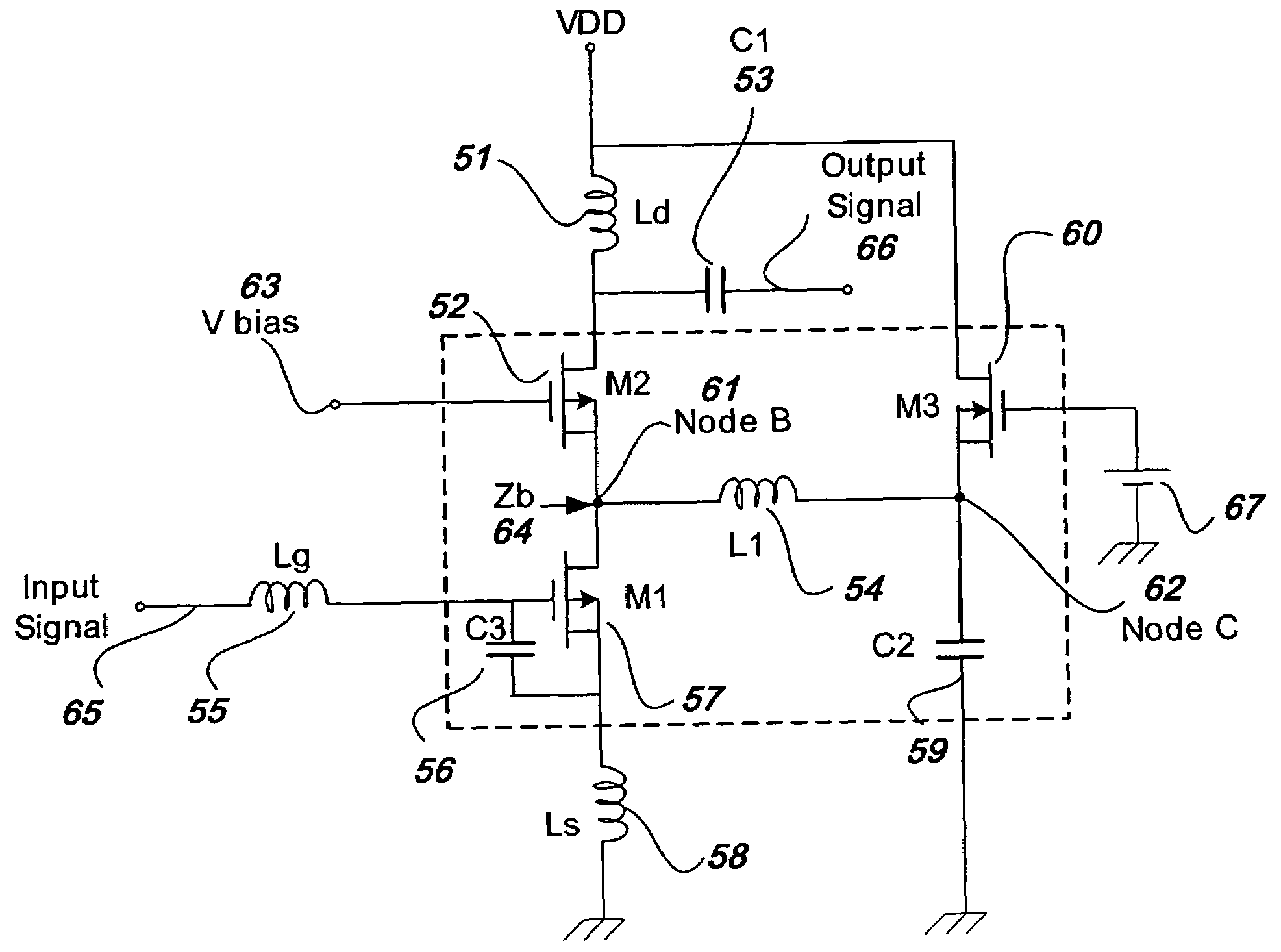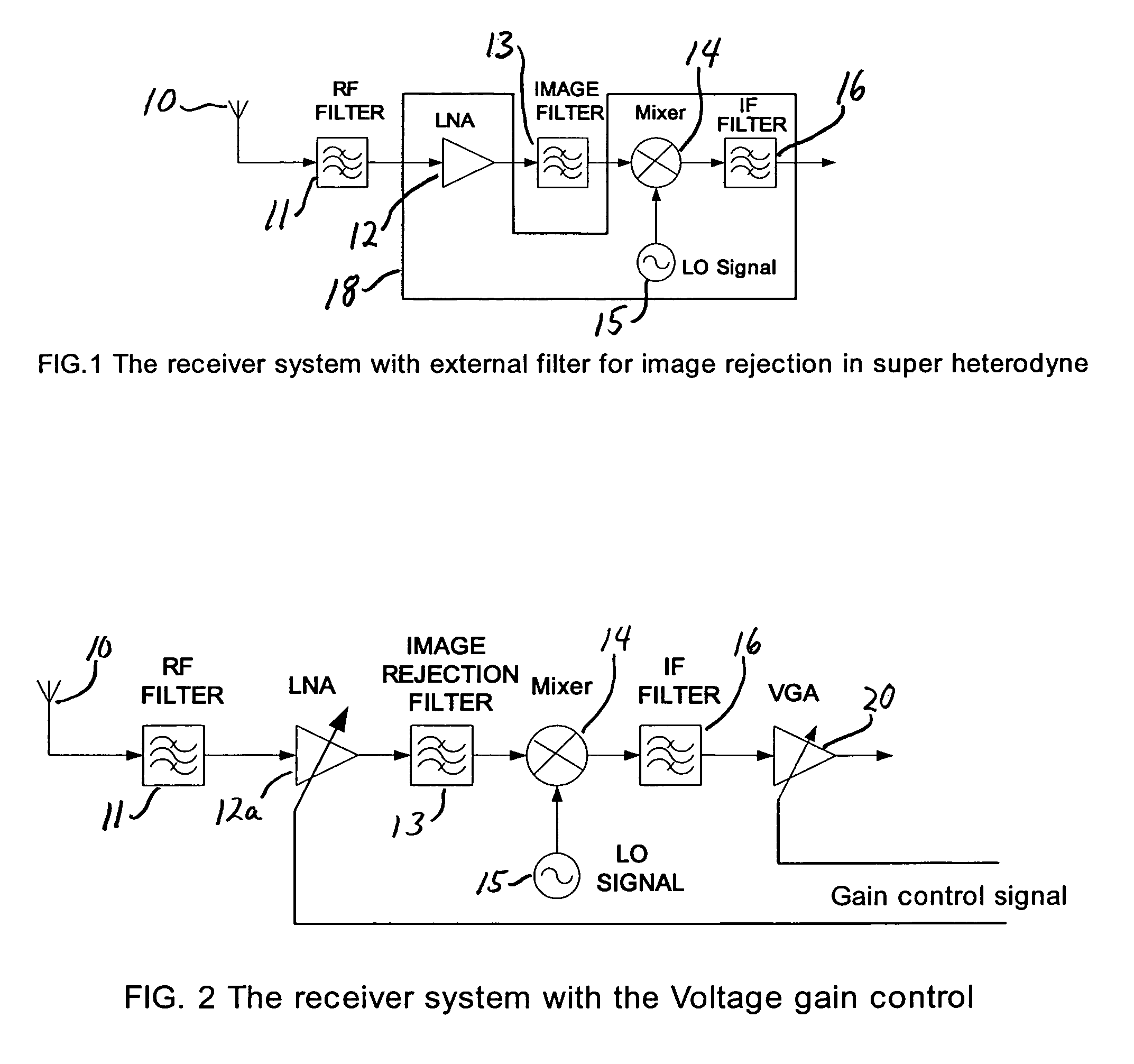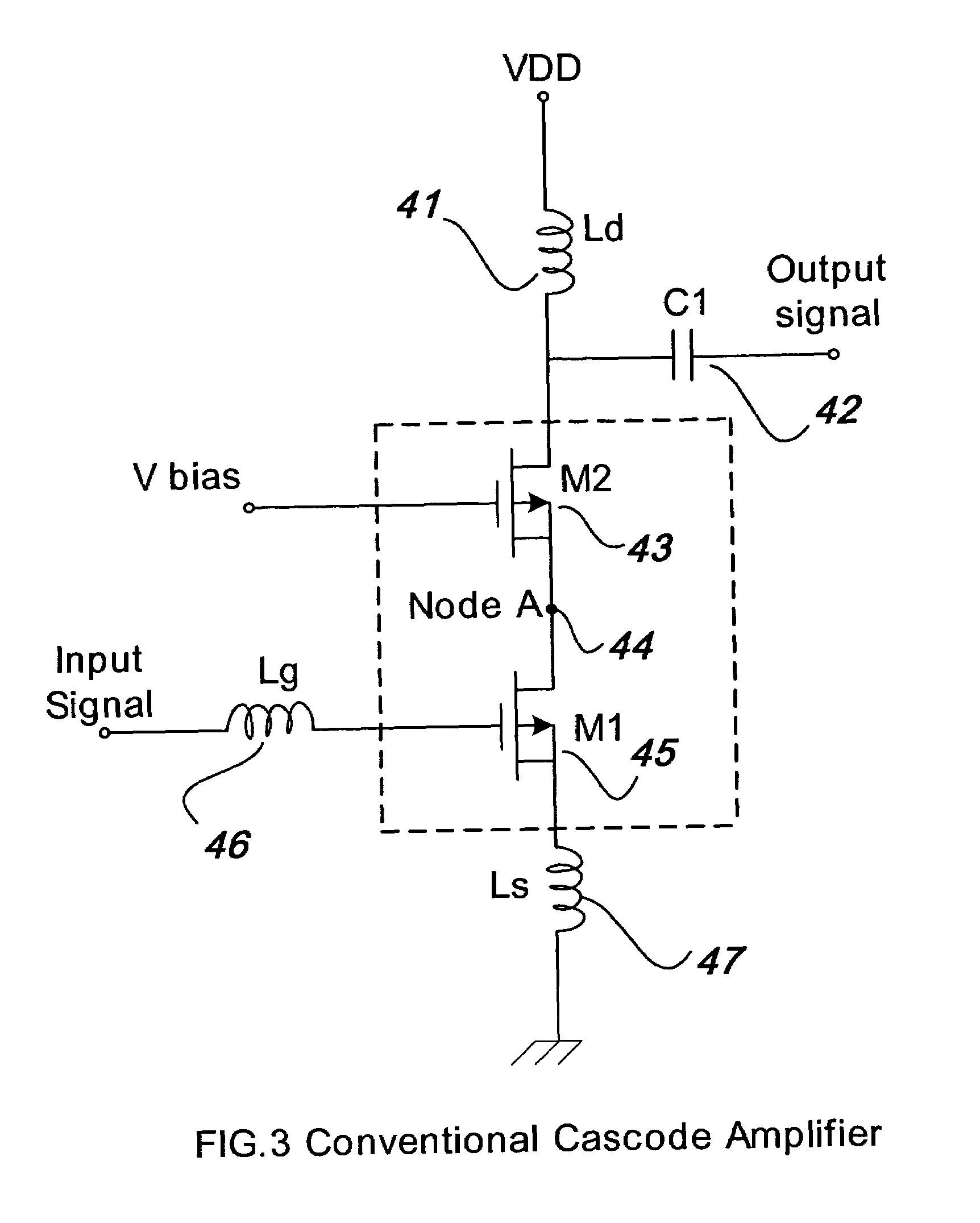Low noise amplifier for wireless communications
a low-noise amplifier and wireless communication technology, applied in the direction of multi-port networks, transmission, gain control, etc., can solve the problems of low noise, bulky filters, image frequency problems, etc., to achieve low noise, cancel high-frequency leakage, and low noise characteristics
- Summary
- Abstract
- Description
- Claims
- Application Information
AI Technical Summary
Benefits of technology
Problems solved by technology
Method used
Image
Examples
Embodiment Construction
[0029]The present invention provides an improvement over the conventional cascode amplifier that is used in a radio frequency receiver communication system. The present low noise amplifier eliminates the need for an external image rejection filter from the receiver circuit so that there is no longer a requirement for an off-chip filter for image rejection. This enables a higher level of integration, a more compact circuit and lower costs.
[0030]The circuit of one embodiment of the present low noise amplifier is shown in FIG. 4. The amplifier, like the amplifier of FIG. 3, has two FETs (Field Effect Transistors) connected to one another. Here, FETs 52 and 57 are provided. The present invention recognizes that the low noise amplifier of FIG. 3 generates a signal leakage due to the parasitic capacitance of node 44, also denoted node A in the figure. In order to solve this signal leakage problem, the first improvement of the LNA topology provides a resonance inductor connected at node A ...
PUM
 Login to View More
Login to View More Abstract
Description
Claims
Application Information
 Login to View More
Login to View More - R&D
- Intellectual Property
- Life Sciences
- Materials
- Tech Scout
- Unparalleled Data Quality
- Higher Quality Content
- 60% Fewer Hallucinations
Browse by: Latest US Patents, China's latest patents, Technical Efficacy Thesaurus, Application Domain, Technology Topic, Popular Technical Reports.
© 2025 PatSnap. All rights reserved.Legal|Privacy policy|Modern Slavery Act Transparency Statement|Sitemap|About US| Contact US: help@patsnap.com



